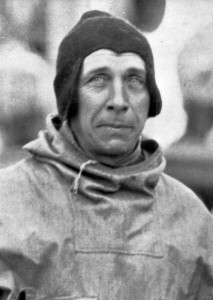

The graphic below shows the striking distribution of fossils Western Africa and South America, and another in Antartica, India andĬentral Africa).

Them to be if there had been Continental Drift (e.g. Wegener also presented examples where fossils ofĮxactly the same prehistoric species were distributed where you would expect With tropical climates, would be found near the North Pole and why the plains of Africa Wegener questioned why coal deposits, commonly associated

His case he drew from the fields of geology, geography,īiology and paleontology. He knew that any argumentīased simply on the jigsaw fit of the continents could easily be explained away. To keep the discussion of Continental Drift alive until his death. Which has been learned in the past 70 years and start all over again."Ĭontinental Drift Theory:Building the Case "If we are to believe in Wegener's hypothesis we must forget everything Thomas Chamberlain, suggested just that : A radical view could even force experts to start Authorities are expert in the current view of Radical viewpoints threaten the authorities inĪ discipline. More importantly however, was that even the possibility ofĬontinental Drift was a huge threat to the authorities in What caused the extreme reaction? His work crossed disciplines.ĭisciplines attacked him as an amateur that did not fully grasp their Alfred Wegener did not even presentĬontinental Drift as a proven theory. The world had to wait until the 1960's for a wideĭiscussion of the Continental Drift Theory to be restarted.Ĭoncept openly discussed. The students' minds would not be befogged. The geologist Barry Willis summed it up best:įurther discussion of it merely incumbers the literature and befogs the Reactions eventually shut down serious discussion of the concept. It also drew the wrath of scientists from these disciplines. Wegener's theory drew from geology, geophysics, zoogeography and Used this and several other arguments to build his case. The map of soil types below (derived from The continents seem to have a jigsaw fit. You can see why Wegener suspected that the continents had once been joined. Only early scientists like Galileo needed to fear the reaction to We are taught that modern scientists areĭriven only by reason and facts. Theory tells us much about the workings of science. In 1912, Alfred Wegener proposed a theory that the continents had once been joined, and over time This forms the basis for sound prognosis of future changes in the Arctic to support the development of appropriate strategies and policy decisions to be taken at the local, national, regional and global level.Alfred Wegener's Continental Drift Theory The research carried out at the AWi observes, measures and quantifies the natural factors, processes and relationships in the past and present of the Arctic and analyses the interactions with other parts of the World. this provides challenges for the Arctic ecosystems and biodiversity on land and at sea, as well as for the sustainable development and future of indigenous people. The Arctic is warming twice as fast as other areas in the World, with profound consequences on sea level, extent and thickness of sea ice, the Greenlandic ice shelf and permafrost, and the access to new and as yet unexplored areas and resources. the Polar regions and the oceans are key areas for understanding of global climate and environmental change. It coordinates polar research in Germany and provides the necessary infrastructure, including permanent and seasonally staffed research stations (such as neumayer Station iii in Antarctica, the German-french research base AWiPEV on Svalbard and the German-russian Samoylov station in the Lena Delta, Siberia), research vessels (such as the internationally renown Polarstern), research aircraft, scientific observatories and measurement systems. With its broad expertise and innovative approaches in bio-, geo- and climate sciences, excellent research facilities, a strong international network of partners and over 30 years of expertise, the AWI is amongst the worlds few scientific institutions that conduct comprehensive research on the icy atmospheric, terrestrial and aquatic realms at both poles. The Alfred Wegener Institute for Polar and Marine Research (AWi) in the Helmholtz Association of German research centres conducts research in the Arctic, the Antarctic and the oceans and coasts of high and temperate latitudes.


 0 kommentar(er)
0 kommentar(er)
